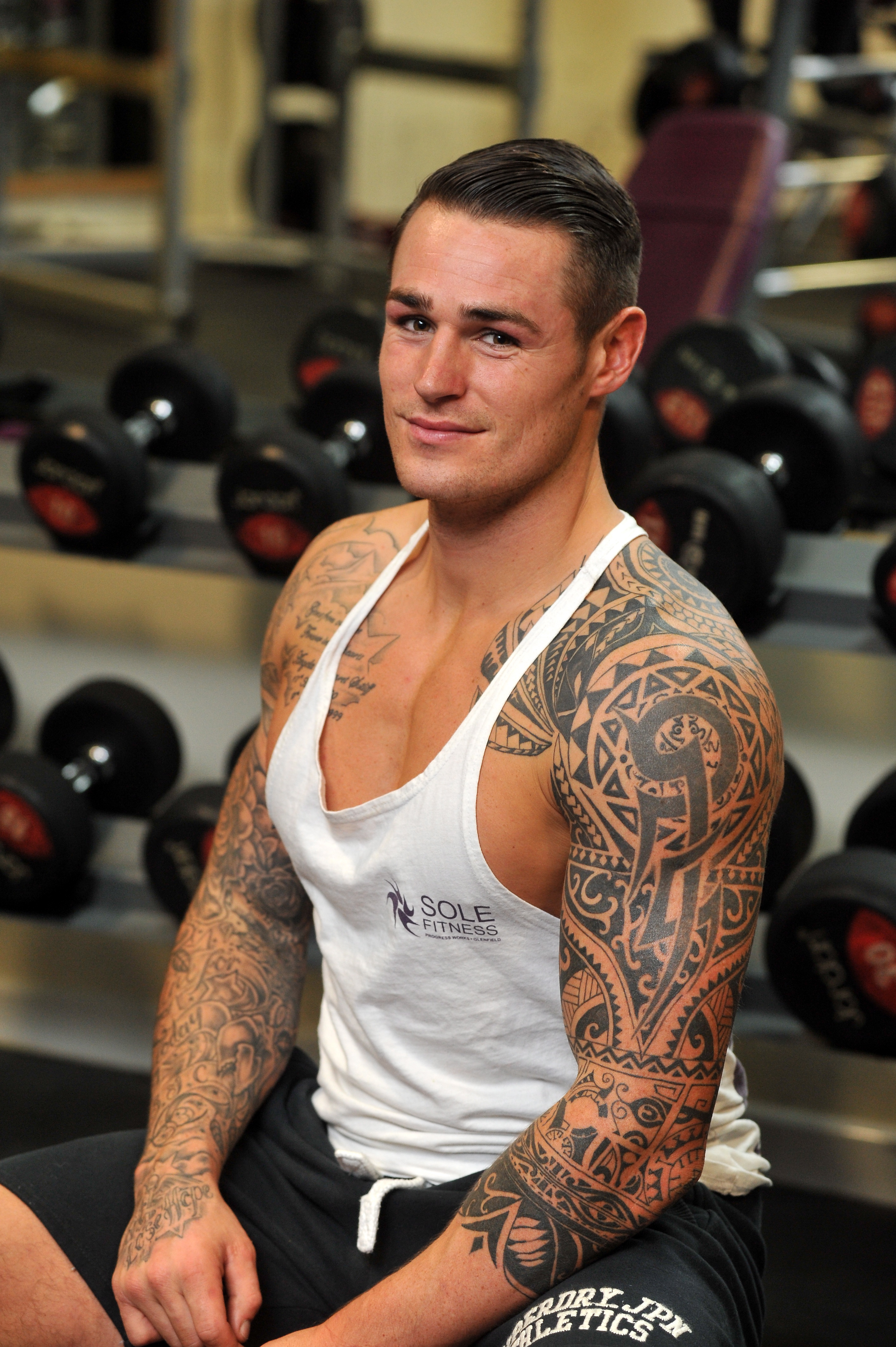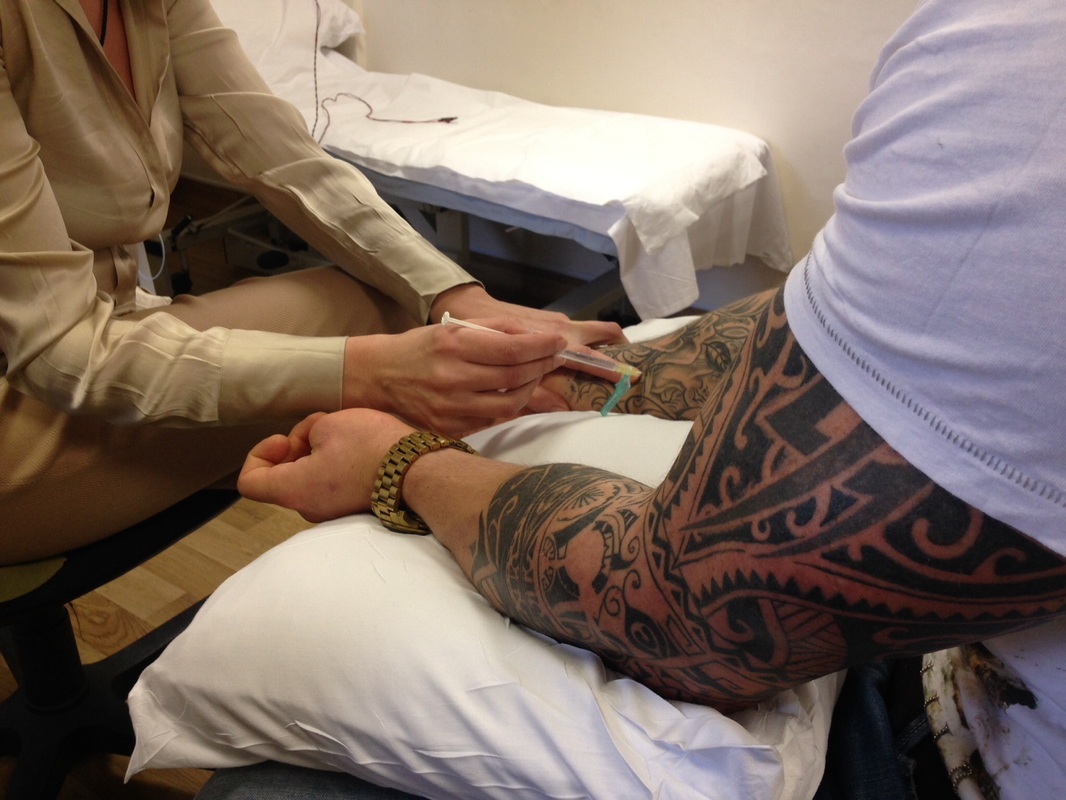 For many folks living with the debilitating neurological condition dystonia, getting physically active and staying fit can seem like a near impossible dream. Repetitive, involuntary muscle contractions can cause the body to twist or take on abnormal postures, leaving muscles tight, strained and sore. Understandably, some fear exercise might make this condition worse—yet on the yoga mat, I not only found more flexibility, mobility, balance and strength, but greater control of this movement disorder. Likewise, weightlifter James Sutliff, of Leicestershire, UK, shared in a recent interview, “having a focus on keeping fit has been my savior.”
For many folks living with the debilitating neurological condition dystonia, getting physically active and staying fit can seem like a near impossible dream. Repetitive, involuntary muscle contractions can cause the body to twist or take on abnormal postures, leaving muscles tight, strained and sore. Understandably, some fear exercise might make this condition worse—yet on the yoga mat, I not only found more flexibility, mobility, balance and strength, but greater control of this movement disorder. Likewise, weightlifter James Sutliff, of Leicestershire, UK, shared in a recent interview, “having a focus on keeping fit has been my savior.”
Five years ago, after a normal night out on the town drinking with friends, Sutliff woke up to a stiff neck, unable to move his tongue or talk. His symptoms progressed to where his speech was slurred and distorted, and his hands locked up in fists. As a result, the rugby player’s life changed suddenly and dramatically.
“I was unable to do the things I would normally take for granted, like having a conversation, or eating a meal in public, as the condition affects my ability to eat properly,” he said.
As the condition of his hands deteriorated, Sutliff had to give up his job as a full-time plumber as he found it increasingly difficult to do his work. After training for the trade for 10 years and earning a great living that afforded financial comfort, this was an especially hard blow.
He also came to the heartbreaking realization that playing rugby was no longer an option. “I had been a keen rugby since I was 14 years of age and played at semi professional level. To be told I had to give it up was quite a disappointment, to say the least,” Sutliff said. “It was around two years after the first onset of symptoms, much to the doctor’s disapproval, but it eventually became too challenging.”
After these huge losses, his confidence and self-esteem plummeted. At first, he didn’t know how to cope with his condition or the major impact it had on his life. “I fell into bad habits and it took some strength to get out of them,” he said, “but no way was I going to let it defeat me.”
Finding Strength Through Fitness
Three years after first developing symptoms, Sutliff was finally diagnosed with dystonia. After researching it and recognizing he had a milder form of the condition, his perspective began to change. Adapting workouts for his hands—which can now slowly open and close—he shifted his focus to his passion for fitness.
“It has helped me to keep positive, focused and to gain confidence and self-esteem,” he said. “It has taken the best part of six years to help rebuild my confidence and learn how to live with for me what was such a life-altering circumstance.”
Sutliff now trains six days a week, doing a combination of free weights, bar and machine. His weight training is broken down into three-week intervals. On week one, he focuses on compound movement. Week two is dedicated to super sets, and he does high reps during week three.
As most exercises that require the use of his hands are challenging, he has special grips for doing pull-downs, shrugs and rows. “I use lighter weights and also have a training buddy who helps spot me,” he said.
For more than two years, the 6-foot-tall Sutliff has dedicated himself to the gym with a focus on entering the Men’s Health cover model competition. He is now one of three athletes with health challenges featured in this year’s November issue of Men’s Fitness magazine.
“It was an amazing experience for me,” he said. “It allowed me to start getting me story out there and to raise awareness for dystonia, which is what I have been working so hard to do for such a long time.”
Inspiring Others By Example
 Sutliff hopes to not only inspire people with dystonia to keep fit, but also anyone with disabilities or obstacles in life that make life a little more challenging. He urges people to keep fighting through their obstacles, as the rewards are well worth it—both physically and mentally. “It will be very challenging at times, and you will most certainly have periods of wanting to give up,” he said. “Have a goal. Stay focused and positive.”
Sutliff hopes to not only inspire people with dystonia to keep fit, but also anyone with disabilities or obstacles in life that make life a little more challenging. He urges people to keep fighting through their obstacles, as the rewards are well worth it—both physically and mentally. “It will be very challenging at times, and you will most certainly have periods of wanting to give up,” he said. “Have a goal. Stay focused and positive.”
He encourages people with disabilities to “make fitness a part of your lifestyle, like taking a shower.” Sutliff advises folks to make sure they are well rested and hydrated before they work out. He also stresses people to be consistent with their diet.
“It’s okay to have cheat days but remember to get right back on track,” he advised.
Nutrition plays a big role in Sutliff’s life. “I would say it is a large part of what keeps me in the shape I am,” he said. “Eating and drinking right feeds you from the inside, and it shows on the outside.”
Sutliff generally consumes a lot of protein, green vegetables and nutrient-dense, complex carbohydrates, like sweet potato. Additionally, he drinks a lot of water. He also recommends the use of supplements, such as creatine and amino acids like glutamine, to aid performance.
Sutliff cautions people with dystonia to not lift too heavy when weight training. “Supersets with light weight, in my opinion, get really good results,” he said.
He offers similar advice for dystonia sufferers who work. “Make sure you do not push yourself too far physically. Take breaks when you feel you need them,” he said.
He encourages people to always communicate with their employers about their condition and how it affects daily life. “It’s surprising how supportive people can be at work—colleagues and bosses,“ he said. Sutliff was able to find different job that is very supportive of his situation, allowing him to take time off for treatments and hospital appointments.
Staying On Top of Dystonia
 To keep on top of dystonia, Sutliff has botox injections every six months and sees a hand therapist every month. He wears special splints in the evenings to help keep his fingers stretched. He also has regular acupuncture and massage treatments. “It helps to relax me and also helps with the emotional, mental aspect, of handling dystonia,” he said. “I also enjoy cleaning the house, funnily enough. I think it’s important to have down time and just chill out.“
To keep on top of dystonia, Sutliff has botox injections every six months and sees a hand therapist every month. He wears special splints in the evenings to help keep his fingers stretched. He also has regular acupuncture and massage treatments. “It helps to relax me and also helps with the emotional, mental aspect, of handling dystonia,” he said. “I also enjoy cleaning the house, funnily enough. I think it’s important to have down time and just chill out.“
Sutliff recognizes that a great support team also helps to get through the challenges of the condition. He is very grateful for the amazing group of friends who have supported him through his journey, including his wife, Sam. “She was and is a huge support system to me,” he said. He credits her for treating him no differently after he developed dystonia than she did before.
“[Dystonia] does not control me nor define me,” Sutliff said. “In the grand scheme of things, I see dystonia as a small part of life.”
He recently announced his plans to do a bodybuilding competition in 2015—100 percent naturally. Though he’s never really been into the competitions he feels his participation will be great for raising awareness of dystonia and other disabilities. He said he hopes to continue to provide a positive image to others, with or without disabilities. He sincerely believes that whatever people put their mind to, they can achieve.
You can follow more of James’s story online at http://www.fyi-findyourinspiration.com
I’m going to start following you and use your tips I had a brain aneurysm and a massive stroke 9-3-13 & I totally lost the use of my left arm/hand &fingers. My cousin has Dystonia, she shared your article with me God bless you!
Crystal xoxo
Crystal, I’m so sorry to hear about you going through an aneurysm and stroke. What kind of therapy have you gone through? I’m glad to hear you were led to my blog by your cousin. How is Crystal’s journey with dystonia? Please stay in touch. God bless you too! xx Renée
I have dystonia as well and this inspires me and you are so hot!